Qsarnaba
Q6374041Qsarnaba: village in the Bekaa valley in Lebanon, site of a Roman temple.

The coastal road from Antioch to the south is a difficult one. Ancient and medieval travelers would prefer the road through the interior, going upstream along the Orontes to Beroea (Aleppo), Baalbek-Heliopolis, and down to Tyre along the Leontes (modern Litani). They would keep the Lebanon to the west and the Anti-Lebanon to the east. The valley between these two mountain ranges is called the Bekaa, and there were many sanctuaries along the road.
One of these was at Qsarnaba, which was, like nearby Niha, situated on the eastern slopes of a mountain named Sannin (part of the Lebanon range). The temple of Qsarnaba was built on a rather high platform, so that a visitor had to climb an unusually long flight of stairs to reach the cult room. The façade has collapsed and the (Corinthian) columns are now gone, but the impressive fronton, which used to face the rising sun, has been reconstructed by the excavators.

In the top of the fronton, the portrait of a man named [N]onianus is still visible. (Remarkably, the inscription is not in Greek, as we would have expected in the eastern part of the Mediterranean, but in Latin.) Probaly, this man was, like the Narkisos shown on the wall of the great temple at Niha, a priest.
In front of the sanctuary are the remains of an altar. Hardly anything of it is preserved, but it is likely to have been a structure like the ones at Machnaqa and Faqra. Several ancient tombs are also visible in the neighborhood of the sanctuary.
Getting there
If you want to go there, take the road uphill to the Shi'ite mosque. The nicely decorated minaret is impossible to miss.
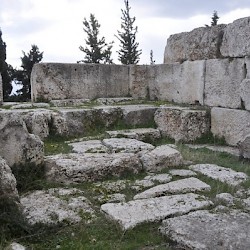 Qsarnaba, Cella |
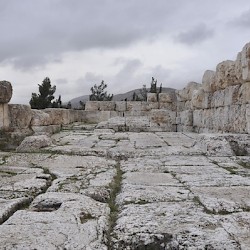 Qsarnaba, Platform |
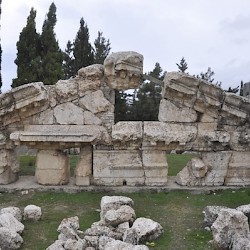 Qsarnaba, Façade, Pediment |
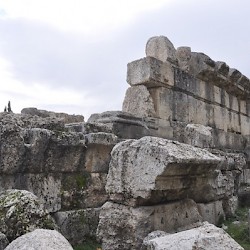 Qsarnaba, Platform wall |
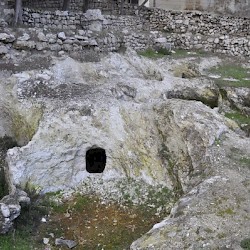 Qsarnaba, Tombs |
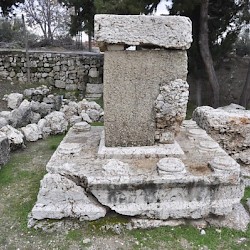 Qsarnaba, Altar |
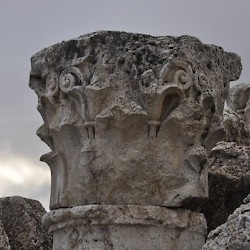 Qsarnaba, Capital |
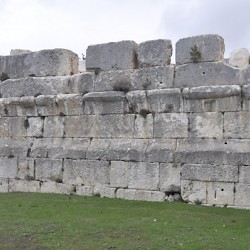 Qsarnaba, Platform wall |